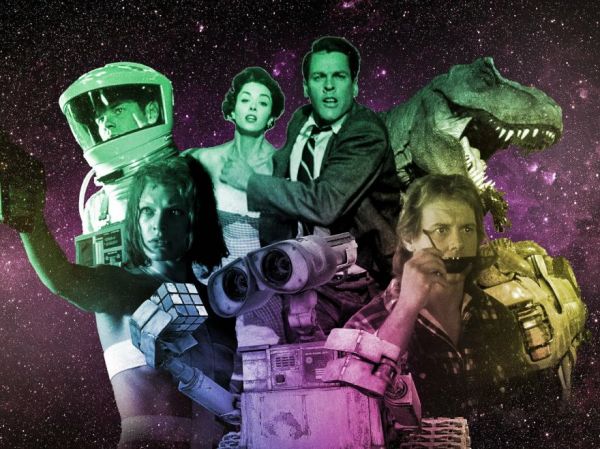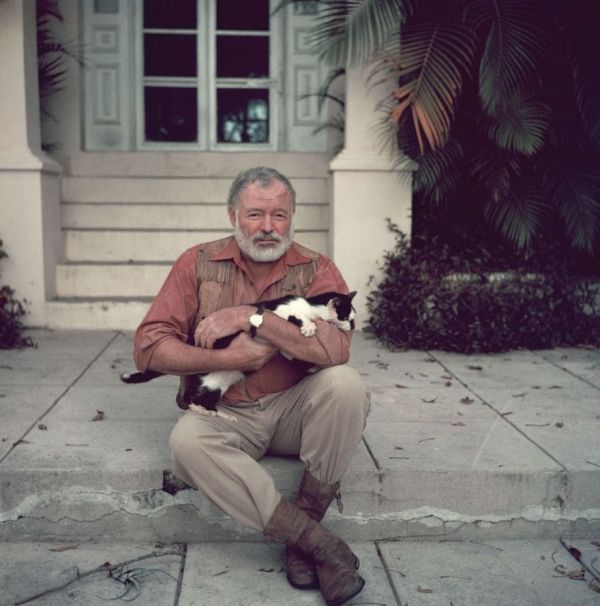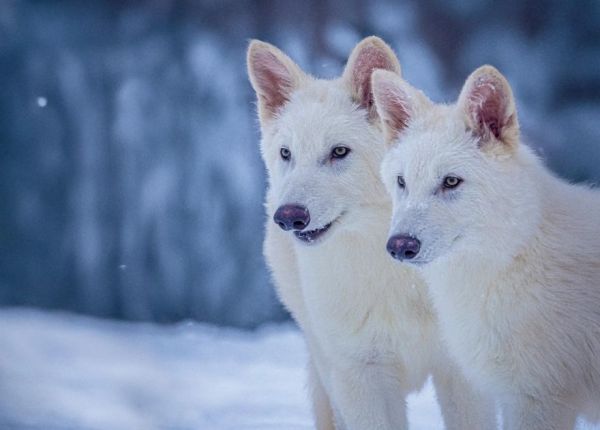At one-time in the past, you would hear about bear-proof garbage bins, but no one uses the term bear-proof anymore because you'll see. The best we can do is to call them bear-resistant. But bears don't even like that term, as ambiguous as it is. Anchorage Solid Waste Services is trying to design garbage bins that are more bear-resistant than previous bins. How are they doing? To find out, the agency took their latest design to the nearby Alaska Zoo. The bins were placed in the grizzly bear enclosure, and the bears thought these were wonderful new enrichment toys. Mind you, these bears are well-fed and not desperate to get into the bins. They're just having fun.
But then I thought, why does a zoo in Alaska have bears? Doesn't Alaska have plenty of bears? Well, it turns out that the Alaska Zoo, the only zoo in Alaska, specializes in local and arctic animals. They began as a shelter for injured and orphaned wildlife, and the zoo's origin story is really interesting. -via Born in Space
Psychologist B.F. Skinner was an expert in behaviorism, and was also a prolific author and inventor. He invented what became known as the Skinner box, in which an animal subject could be trained by a system of rewards. But that had nothing to do with another of his inventions, which he called the "air crib." When Skinner's second daughter Deborah was born, he and his wife Yvonne designed a modern crib for her that was revolutionary. It was higher than normal, so a parent didn't have to stoop down to reach the baby. It was enclosed, with a glass front, and had temperature and ventilation controls plus a dust filter. The linen on the mattress was on a roller, so it could be changed with a simple crank. A few hundred families used the air crib with reportedly good results. Skinner wrote about the crib for Ladies Home Journal in 1945.
But it never really caught on, mainly because of Skinner's reputation as an experimental psychologist and the association of the crib with the Skinner box. News stories said that Deborah was raised in the crib, although she spent no more time in it than any baby would in a traditional crib. The idea smacked of automated parenting, even though Skinner's (and Yvonne's) goal was to reduce the drudgery of parenting an infant while providing a healthy environment. And that's somewhat of a shame, because now we know that widespread use of the air crib might have saved many babies' lives by preventing Sudden Infant Death Syndrome (SIDS). Read about the concepts behind the air crib that turned out to be the right idea at The Los Angeles Review of Books. -via Strange Company
The band OK Go has a catalog of songs on generic subjects that are all quite pleasant but not earth-shattering. However, they will go down in history for their videos, which are not only clever but so meticulously choreographed that they should be classified as dancers as well as musicians. In other words, the videos themselves are an art form. The video for their new single "Love" (as generic a title as it gets) is all about mirrors and the kaleidoscopic effects they produce, with the aid of precisely-timed robots. It's a feast for your eyes. And the song is rather nice, too.
If you're interested and have 20 minutes to spare, you can see a behind-the-scenes video about the making of the "Love" video. But as a commenter said, you can just watch the music video itself and see exactly how they accomplished each scene in the video and it's still amazing. -via Laughing Squid
Suggestion: watch with audio turned off.
NEW: San Francisco has erected a statue of a woman with no clothes on which will be greeting visitors in front of the Ferry Building.
— Collin Rugg (@CollinRugg) April 10, 2025
The 45-foot-tall statue was installed to "jazz up downtown" according to CBS News.
One worker was seen doing a "surgical procedure" on the… pic.twitter.com/QjxhbiYEpn
Marco Cochrane is an American artist most famous for his enormous metal sculptures of nude women. He recently installed a 45-foot tall piece in San Francisco titled "R-Evolution." It represents "feminine strength and liberation." An access port at the base of the torso allows access to the interior.
What people remember -or have heard- about the Vietnam draft was that millions of young men were drafted to fight the war, millions tried to get out of it, sometime fraudulently, and millions fled to Canada to avoid it. The real story is not quite so extreme. Only about 25% of the eight million Americans who served in Vietnam during the war were draftees, and only about 40,000 young men fled to Canada to avoid the draft.
Not every eligible young man was in danger of being drafted, since the Selective Service had a lottery to determine who would be called up first- by the date of their birthdays. These lotteries were televised, so young men could witness their odds of being shipped overseas in real time. While the lotteries were fairly random, getting a student deferment or a medical exemption was easier for those with money and connections. The threat of the draft hanging over one's head for years led to massive cultural shifts in the 1960s and '70s. Read the facts behind the Vietnam War draft at Mental Floss.
We all know what bubble gum flavor is. We all know what it tastes like. But how do we explain that taste to someone who's never tasted it? We might try to compare it to natural ingredients, but that would be rather difficult. Like everything else these days, it's made with artificial flavors. But what flavors?
Weird History looks into bubble gum flavor, what's in it, what it's supposed to taste like, and how it came about. That, of course, means telling us the history of gum, and then bubble gum in particular. Bubble gum is less than 100 years old, as it was invented in 1928 when the crucial ingredient latex was added to a failed prototype. All that history is pretty interesting, but if you want to learn about the flavoring only, you'll need to skip to about nine minutes into this video. If you watch the whole thing, you'll know everything there is to know about bubble gum.
TimeOut dares to go there, and they did it in a big fashion, by making a ranked list of the 100 best science fiction films of all time. But it wasn't just the TimeOut staff who contributed opinions. They also asked a few experts, "from Nobel Prize-winning geneticist Sir Paul Nurse, to Oscar-decorated film director Guillermo del Toro, to Game of Thrones writer George RR Martin and Black Mirror creator Charlie Brooker," to make the list seems more, uh, professional.
Since this is a list of 100 movies, I expected it to begin with some that are pretty bad, but no. There have been so many good science fiction films over the past century that the entire list is worth a watch. The list is populated with good movies interspersed with movies I haven't yet seen, and in that it works as a recommendation list. You'll want to argue about the rankings, and maybe the categorization of some movies, but you have to admit that it's a treasure trove of sci-fi goodness. -via Metafilter
Online humor creators Jess & Quinn illustrate in a few seconds why Microsoft Word can be so frustrating.
I use Word every day. It's not actually this bad if you understand how a page is structured. But it's not MS Publisher and is clunky if you're trying to use it that way. Anyway, leave the furniture alone unless your house is equipped with an undo button.
-via Physics Geek
If someone were to ask to you to guess the most expensive substance on earth, you would probably reflexively answer "printer ink." Yeah, it's quite pricy, but nothing compared to some substances you don't think of because you can't afford them anyway. But what makes a substance expensive? First, there's supply and demand. If something is rare, like a red diamond, people are willing to pay more to have it. Or the expense could be calculated by how much we invested to get it. Samples brought back from outer space require millions to retrieve, and are irreplaceable. Or it could be that a substance is just so wonderfully useful, like a cure for cancer.
Science Focus has a list of the seven most expensive substances on earth, and the top two both combine all three reasons: they are rare, very difficult and expensive to manufacture, and highly coveted because of their usefulness. But you won't guess what they are until you read about them. -via Real Clear Science
Lions and tigers and bears, oh my! That line from The Wizard of Oz has accompanied the viral images of a lion, tiger, and bear living together for more than 20 years. The story is true. While it may have started tragically, these animals were devoted to each other and well-cared for most of their lives. They were confiscated from the home of a drug dealer in Atlanta in 2001, and were sent to Noah's Ark Animal Sanctuary in rural Georgia. The creatures, all apex predators, saw each other as family and only thrived when they were together, so that's how they lived for 15 years at the shelter. They came to be known as BLT (bear, lion, tiger). Leo lived to be 15 years old, and Shere Khan died at the age of 17, both having lived quite long for their species. You can learn more about Leo, Shere Khan, and Baloo at Wikipiedia.
Ernest Hemingway, a notoriously manly man, for better or worse, was given a gift of a polydactyl kitten by a sea captain. Polydactyl cats, those which have more than the regulation number of toes, were said to be good luck on a ship because they had more ways to grip the deck. There is some disagreement over whether this kitten was named Snowball, or was Snowball's kitten named Snow White, but Hemingway fell in love with the cat and installed her at his Key West home. He doted on the white cat and her kittens and grandkittens. When Hemingway died in 1961, his will stated that all of the cat's descendants, many of which were polydactyl, would be housed there and protected in perpetuity.
The Hemingway estate has carried out those wishes, and more than 50 years later is home to nearly 60 cats, about half of which are polydactyl. In fact, cats with extra toes anywhere are often called Hemingway cats. Visitors to the estate report that the cats are very friendly. If you can't visit, you can see the cats by downloading a cat app from the estate's website. -via Metafilter
(Image credit: Hans Malmberg)
The appropriately named shop Irregular Choice provides unusual shoes and accessories for people that want to stand out in a crowd. One of its dominant themes is the Monopoly board game. Perhaps the flashiest of all of its Monopoly shoes is this pair that resembles the squares with six-sided dice as the heels and single dollar bills as bows.
This pair is currently out of stock, but there are other Monopoly items available, including handbags and boots. Although they are pricey, buying them is how you show that you are a high-rolling tycoon on his way to breaking your competition by building hotels in Boardwalk.
-via Toxel
Kawasaki is known for their motorcycles and ATVs, and now they've surprised the world with a robotic walking vehicle you can ride like a motorcycle. This is CORLEO, a quadruped robot vehicle that runs on a hydrogen fuel cell. The independent movements of its four legs was inspired by a wolf. You ride it as if you would a horse, but its movements are smoother and more wide-ranging, more like a cat, making it more useful than a horse in rough terrain. But there's something rather human about those rear feet and hindquarters that strikes me as a little creepy. This robot responds to the rider's movements, such as a shift of weight. Sure, it has a dashboard, but we don't know much yet about the controls. CORLEO will be unveiled at Osaka-Kansai Expo 2025 later this month, but don't expect it at your local motorcycle dealership anytime soon. Kawasaki aims to have it ready for retail sale sometime in the next 25 years. -via Geeks Are Sexy
A company called Colossal Biosciences has been working on "de-extinction" with projects set up to bring back extinct species such as the dodo, woolly mammoths, and Tasmanian tigers. Their first announced success, however, has been the birth of three dire wolves, two males named Romulus and Remus, and a female named Khaleesi. Dire wolves have been extinct for ten thousand years.
These wolf pups were produced by a complex process that involved sequencing dire wolf DNA from fossils. This DNA is not viable, but it could be compared to modern canine DNA. Then they spliced modern wolf DNA in 20 places to make it resemble the dire wolf DNA. Once that was accomplished, the resulting cell was grown using the usual methods of cloning, including embryo implantation into domestic dogs who gave birth to these puppies.
Colossal Biosciences considers this a major breakthrough in bringing back extinct species, but scientists from elsewhere have their doubts. Sure, they look like dire wolves, but can they really be a different species, or are they just genetically-modified grey wolves? Read about how the dire wolves came about at New Atlas. -via Damn Interesting
(Image credit: Colossal Biosciences)
This is short and sweet and might put a smile on your face or even make you laugh. Artist Rudy Willingham, who finds creative ways to make street art (previously at Neatorama), has taken a simple pun and made it work in the real world. He took 133 pieces of bread, toasted each one, and then burned onto each one an image of Post Malone in the process of singing. These 133 slices of toast were assembled in order to make the bread lip-sync Malone's song "Circles." The resulting animation, this magnificant work of art, is entitled "Toast Malone," of course.
This wordless project could be considered a video version of a shaggy dog story of sorts, as it goes to great lengths to eventually lead us to a simple pun as a punch line. You have to admire the ridiculous amount of effort that went into this. -via Laughing Squid












